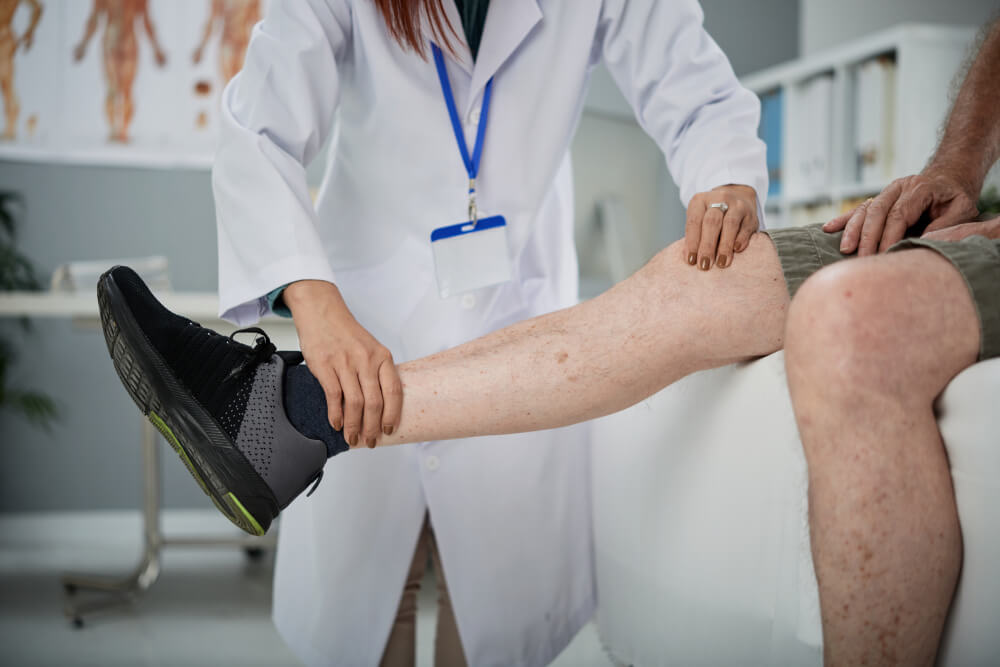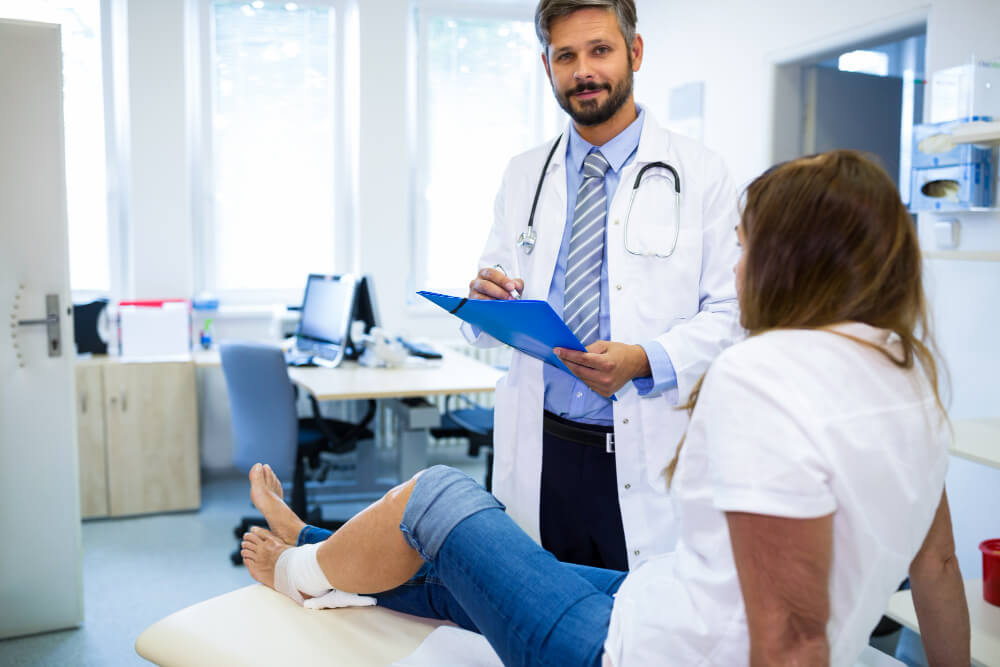Keeping Your Legs Healthy: Understanding Leg Ulcers, Varicose Veins, and Vascular Care
Our legs are remarkable structures that tirelessly support us throughout the day. They allow us to walk, run, jump, and navigate our world. Maintaining optimal health in our legs is essential, and a crucial element of that is ensuring proper blood flow. Unfortunately, various factors can disrupt this vital process, leading to conditions like varicose veins and leg ulcers. This article sheds light on these issues and the importance of vascular care in promoting healthy legs.
Leg Ulcers: Open Wounds and Underlying Issues
Leg ulcers are open sores that develop on the legs, typically below the knee and around the ankle. They can be shallow or deep and are often slow to heal. These open wounds can cause significant discomfort, pain, and even limit mobility. While leg ulcers can have various causes, a common culprit is a condition called venous insufficiency.
Venous Insufficiency: When Blood Flow Falters
Venous insufficiency occurs when the veins in the legs struggle to pump blood back to the heart effectively. This can happen due to weakened valves within the veins, which normally prevent blood from flowing backward. As blood accumulates in the veins, pressure increases, leading to various complications, one of which is leg ulcers.
Varicose Veins: Twisted and Troublesome
Varicose veins are enlarged, twisted veins that appear visible and bulging just beneath the skin surface, usually on the legs. These unsightly veins are more than just a cosmetic concern; they can be a sign of underlying vascular problems and contribute to the development of leg ulcers.
Here’s how varicose veins increase the risk of leg ulcers:
- Increased Pressure: Varicose veins create a backflow of blood, leading to increased pressure in the veins of the lower leg. This increased pressure weakens the skin and tissues, making them more susceptible to damage and ulcer formation.
- Poor Circulation: Varicose veins hinder the efficient flow of blood, leading to decreased oxygen and nutrient delivery to the skin. This can impair the skin’s healing ability and contribute to ulcer development.
- Inflammation: Varicose veins can cause chronic inflammation in the surrounding tissues. This inflammation can further damage the skin and impede healing.
Symptoms and Signs to Watch Out For
Early detection and treatment of leg ulcers are crucial for promoting healing and preventing complications. Here are some signs and symptoms to watch out for:
- Open wound: This is the most evident sign of a leg ulcer. The wound may be shallow or deep, red or purple, and may ooze pus or fluid.
- Pain: Leg ulcers can be painful, especially when touched or under pressure.
- Swelling: The area around the ulcer may be swollen, red, and warm to the touch.
- Changes in skin color: The skin around the ulcer may become darker or discolored.
- Itching: The skin around the ulcer may be itchy and irritated.
If you experience any of these symptoms, it’s crucial to consult a healthcare professional promptly for proper diagnosis and treatment.
The Role of Vascular Care in Leg Ulcer Prevention and Management
Vascular specialists have the expertise to diagnose and treat leg ulcers and their underlying causes. Here’s how vascular care can help:
- Diagnosis: Vascular specialists can perform various tests to diagnose leg ulcers and identify the underlying cause, such as venous insufficiency.
- Treatment: Treatment options for leg ulcers depend on the severity of the condition. They may include compression therapy, medication, wound care management, minimally invasive procedures to address varicose veins, or even surgery in some cases.
- Prevention: Vascular specialists can also provide guidance on preventing leg ulcers. This may include maintaining a healthy weight, wearing compression stockings, elevating your legs regularly, and practicing healthy lifestyle habits like exercise and avoiding smoking.
Taking Care of Your Legs
By understanding the connection between leg ulcers, varicose veins, and vascular health, you can take proactive steps to prevent these conditions. If you experience symptoms of a leg ulcer, seek medical attention promptly. Early diagnosis and treatment by a vascular specialist can significantly improve your chances of healing and prevent further complications. Remember, healthy legs are essential for mobility and overall well-being.


